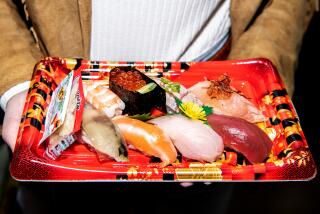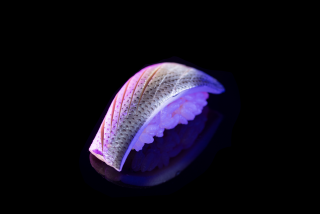Japanese Beef Import Quotas Will End Today : Agriculture: U.S. ranchers hope to cash in. Many Japanese producers may move to more expensive cattle.
MINORI, Japan — Tension and disappointment were more palpable than the pungent smell of panicky cattle at the livestock market just northeast of Tokyo.
Farmers cocked their heads in dismay when their Holsteins failed to fetch even half the customary price--or found no buyers.
“Come on, please buy,” a rancher wearing a baseball cap and knee-high rubber boots pleaded with bidders in the bleachers.
Behind the lackluster Holstein market in Ibaraki state is the lifting of import quotas on beef and citrus, Japan’s latest action to ease U.S. criticism of its trade practices. Quotas remain on dairy and other agricultural products, and virtually all rice imports are still banned.
Japan has slowly opened its beef markets in response to U.S. pressure, enlarging import quotas by 60,000 tons annually since 1988. Consumption has not kept pace, creating a stockpile of 110,000 tons of imported beef.
All beef quotas end today.
“Prices have been going down for months, and now’s the worst time,” said farmer Shigekazu Furusawa. “Things will probably settle down sooner or later, but who knows if that’s going to be three months from now or six months from now? We’re in business. We can’t wait.”
Lower-quality cuts of U.S. beef are expected to become cheaper with the end of quotas, but prices of better cuts may not fall until high tariffs are reduced over the next few years, a U.S. official said on condition of anonymity.
Beef prices in Japan can be three times those in the United States, but the difference varies by cut.
Many Japanese raisers believe that they can survive the competition by switching to wagyu, a more expensive breed unique to Japan.
They say Japanese prefer wagyu because it is tender, the right shade of pink and has perfect marbling.
Expensive restaurants pay $13 a pound for wagyu and serve it in paper-thin slices for Japanese-style hot pots. Consumers must pay $33 a pound for it.
Kazuhiro Kawai, who owns 300 head of wagyu in Ibaraki, said there is no way an American ranch with 15,000 head of cattle can compete with his small farm in producing quality beef.
“The Americans think in denominations of 100 cows, not each individual cow,” he said. “It doesn’t even matter if one or two die. They use cranes to give the feed (while) we use buckets and ladles.”
U.S. beef exporters dismiss arguments that Japanese beef is superior and say they have an excellent chance in the market.
Another U.S. official, speaking anonymously, predicted that Japanese consumers will be broiling American steaks when the price of imported beef goes down. The U.S. Meat Export Federation said American cattlemen are trying to develop more tender beef for the Japanese market.
Supermarkets will have sales on imported beef this week to welcome the end of quotas. Daiei will offer shoulder roasts of prime Kansas beef for $8.50 a pound.
A flat 70% tariff replaces the old system of 25% plus “regulating charges,” a fluctuating duty designed to keep prices of imported beef in line with prices of the domestic product.
In 1992, the rate drops to 60%. It goes to 50% the following year and could fall further if trade rules are liberalized under the General Agreement on Tariffs and Trade.
More to Read
Sign up for Essential California
The most important California stories and recommendations in your inbox every morning.
You may occasionally receive promotional content from the Los Angeles Times.










